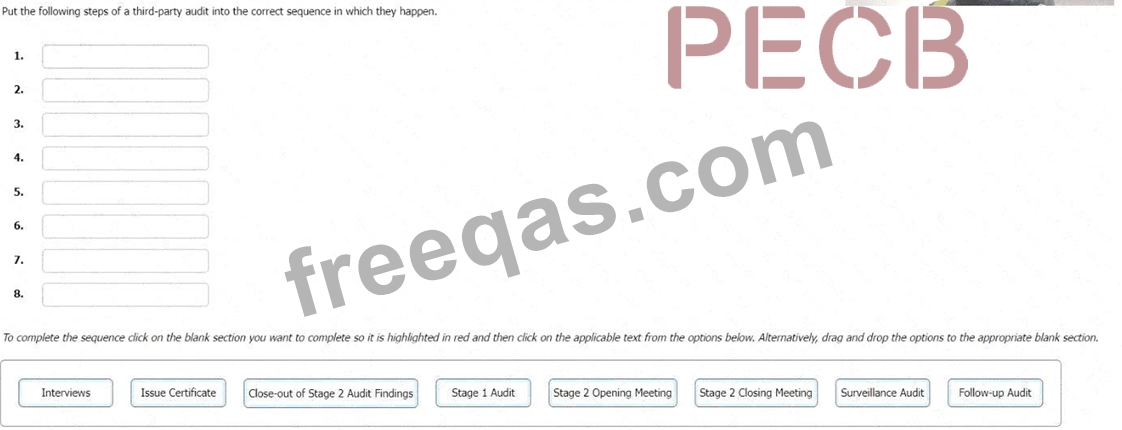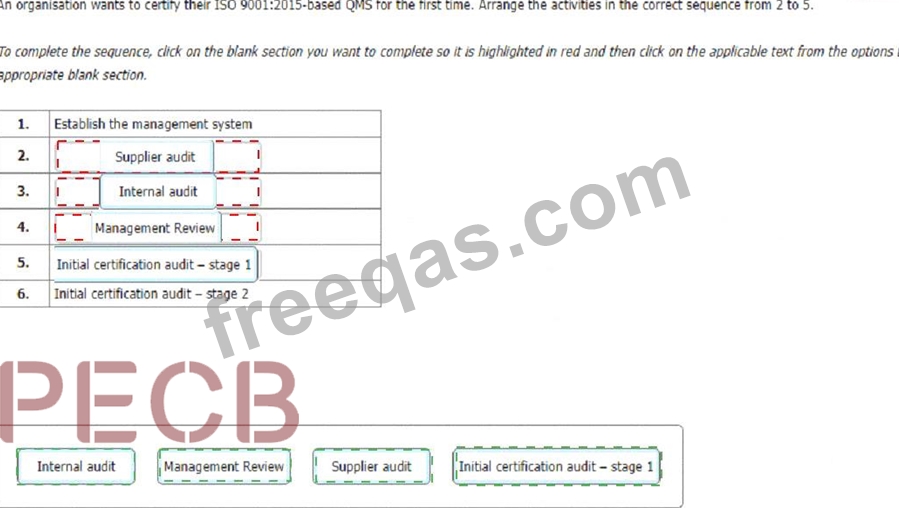"A set of interrelated or interlacing elements of an organization to establish policies and objectives, and processes to achieve those objectives" is the definition of a/an:
What does the application of the process approach in a QMS enable?
A Health Trust has contracted with Servitup, a catering services company that has been certified to ISO
9001 for one year. It provides services to 10 small rural hospitals in remote locations involving the purchase and storage of dry goods and fresh produce, preparing meals and loading heated trolleys for ward service by hospital staff. You, as auditor, are conducting the first surveillance audit at one site with the Deputy Catering Manager (DCM).
DCM: "I apologise for the absence of the Catering Manager. He has called in sick today and we are really short of staff." You: "I see. It really shouldn't affect the QMS so the audit can progress as normal." DCM: "The Catering Manager set up the system. I'm afraid I'm not as familiar with it as he is." You: "OK, let's start with the Quality Policy. What are the main issues for the QMS here?" DCM: Give me a minute. I need to look at the Quality Policy on the noticeboard in his office.
You find that two internal audits have been carried out in the first year by the Catering Manager. One of them indicates that complaints from patients are increasing in number, mainly due to food being served too cold. The DCM comments that the trolley thermometer is often unreliable.
Which two of the following actions would be "correction" in dealing with the complaints?
Put the following steps of a third-party audit into the correct sequence in which they happen.

An organisation wants to certify their ISO 9001:2015-based QMS for the first time. Arrange the activities in the correct sequence from 2 to 5.
To complete the sequence, click on the blank section you want to complete so it is highlighted in red and then click on the applicable text from the options below. Alternatively, drag and drop the options to the appropriate blank section.

Enter your email address to download PECB.ISO-9001-Lead-Auditor.v2025-09-24.q107 Dumps
